Using data from the Hubble Telescope and the ESO’s Very Large Telescope in Chile, a team of scientists have successfully detected clouds on an exoplanet and even measured their altitude. Plus, fossil evidence of humans’ arrival in North America and a review of the first episode of “Foundation” on Apple TV+.
Podcast
Show Notes
Dark Energy Survey releases new image of the Fornax Cluster
- NOIRLab press release
“Molten” galaxy imaged using gravitational lensing
- ESA Hubble press release
- Hubble press release
- NASA press release
- “The Einstein Ring GAL-CLUS-022058s: a Lensed Ultrabright Submillimeter Galaxy at z = 1.4796,” A. Díaz-Sánchez et al., 2021 September 23, The Astrophysical Journal
Amazing image of Mars’ surface taken with Percy
- NASA JPL press release
Footprint fossils show Americas settled earlier than thought
- The University of Arizona press release
- Fossilized footprints show humans made it to North America much earlier than first thought (CNN)
- “Evidence of humans in North America during the Last Glacial Maximum,” Matthew R. Bennett et al., 2021 September 24, Science
Clouds detected on exoplanet WASP-127b
- ESPC press release
- “WASP-127b: a misaligned planet with a partly cloudy atmosphere and tenuous sodium signature seen by ESPRESSO,” Romain Allart et al., 2021 September 13-24, European Planetary Science Congress 2021
- “WASP-127b: a misaligned planet with a partly cloudy atmosphere and tenuous sodium signature seen by ESPRESSO,” R. Allart et al., 2020 December 16, Astronomy & Astrophysics
Review: “Foundation” from Apple TV
- Foundation (Apple TV+)
Transcript
Hello and welcome to the Daily Space. I am your host Dr. Pamela Gay, and I am here to put science in your brain.
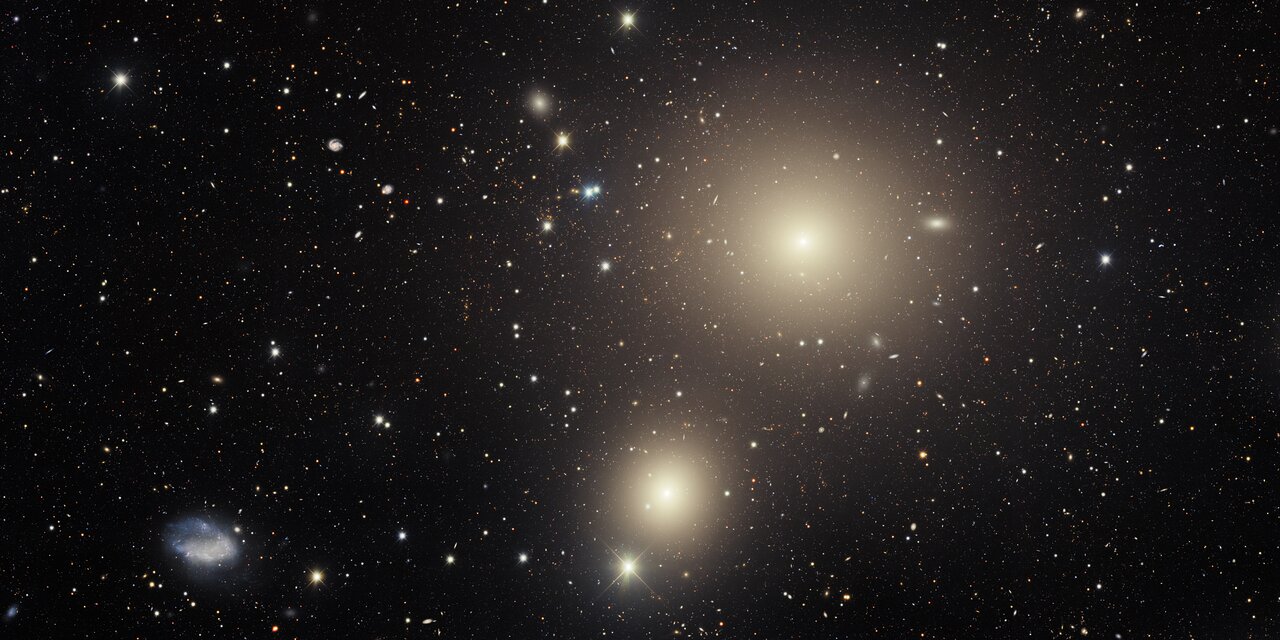
We’re recording this episode on a Friday afternoon, and on this 572 day of March 2020, we’ve received a gift from the field of astronomy – a round of pretty pictures. We are going to happily sit back and use this first segment of our show to consider the beauty of our Universe.
Starting far from home, we have this newly released image of the Fornax Cluster’s central region. This image was taken as part of the Dark Energy Survey and is part of multi-year efforts to map the positions and motions of galaxies in amazing detail. The Fornax cluster is one of the closest galaxy clusters to our galaxy group, and only the Virgo Cluster, which we are becoming part of, is closer.
Like most galaxy clusters, the central galaxies are massive elliptical systems that anchor the cluster and constantly merge and interact with other systems. In the lower-left corner of this image, we can see an irregular galaxy system that is plunging headlong into the center of the galaxy where it will eventually be torn apart through gravitational interactions and the shock striking intergalactic gas and dust.
We are seeing truly beautiful destruction.
This next image is one that I have to admit plays with my mind. This is another galaxy cluster, also located in the direction of the Fornax cluster, but it is more distant and aligned nicely to magnify a background galaxy in such a way that it appears to glint like spilled molten metal as the distorted light twists around the system. In this case, the gravity of the cluster bends light intended for another part of our universe toward us, and because the mass distribution in the galaxy is lumpy, the light is bent imperfectly. It is out of this imperfection that we get this beautiful illusion.
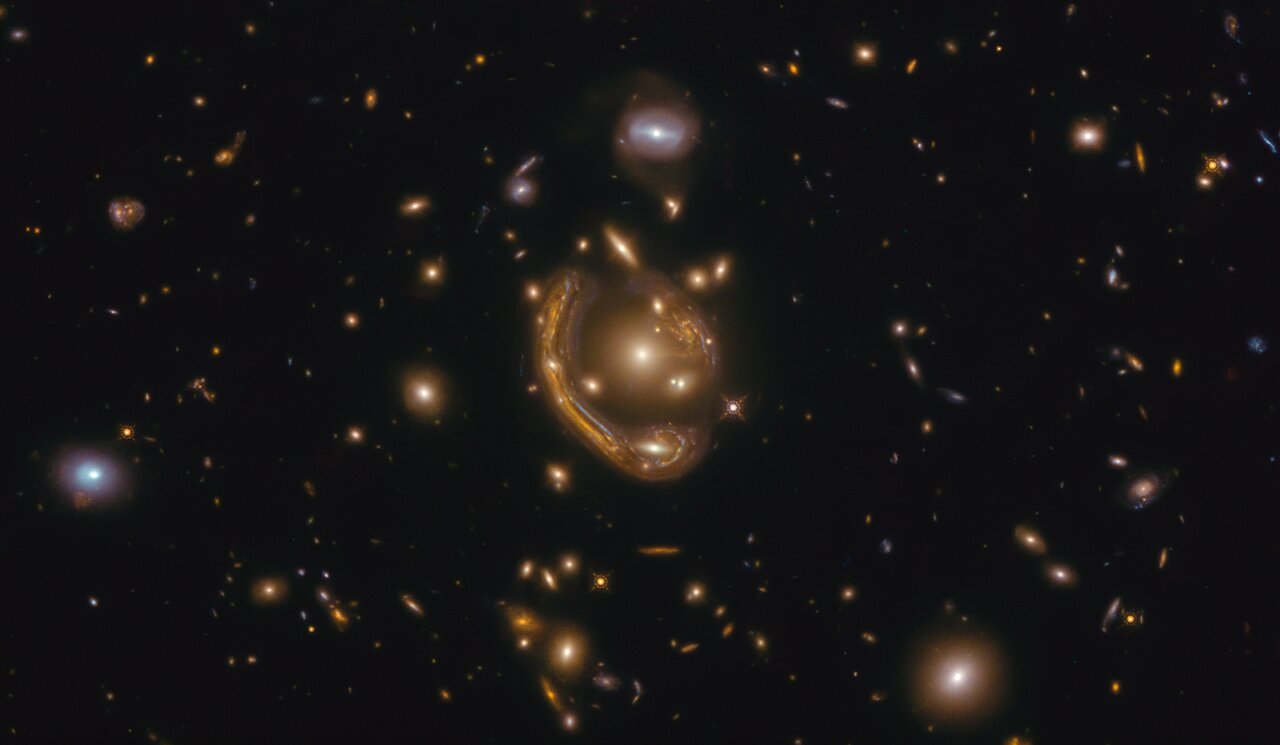
This image was first released in December 2020, and we bring it to you now as researchers release new information on that molten appearing galaxy. Just as it’s possible to fix an image distorted by a funhouse mirror if you know the shape of the mirror, it’s possible to fix the twisted appearance of the distant galaxy if you know the distribution of mass in the cluster. Working things backward, the team determined the galaxy is 9.4 billion light-years away. The intervening cluster, GAL-CLUS-022058s, effectively magnifies the light of that system by a factor of twenty. Hubble would need to have a 48-meter mirror to see things as well as this galaxy’s gravitational magnification allows. It is always nice when our universe makes it possible to see what our instruments otherwise could never see.
This last picture of the segment comes to us from Mars. The Perseverance rover has obtained an amazing color image of its surroundings at Jezero Crater. The image you see here doesn’t allow for a full appreciation of the details. This image was created from seventy individual images that were mosaiced together. The color was then enhanced to make the variations from stone to stone easier to see.
This image was acquired to make it possible to better select the rover’s next sample site. Acquired using Percy’s Mastcam-Z camera system, the rover’s location is believed to have been shaped by past flooding. It is hoped that this region’s rocks contain locked in their minerals the history of Mars’s watery past.
Unfortunately, we’re going to have to wait sometime before we can study those rocks. Perseverance will be collecting rocks for some time, and after that collection is complete, an as-yet-unnamed mission will go to Mars to collect those samples and return them to Earth. It will be years – possibly a decade – before analysis can be done, so for now, we will enjoy these images and learn what we can through our robot colleagues.
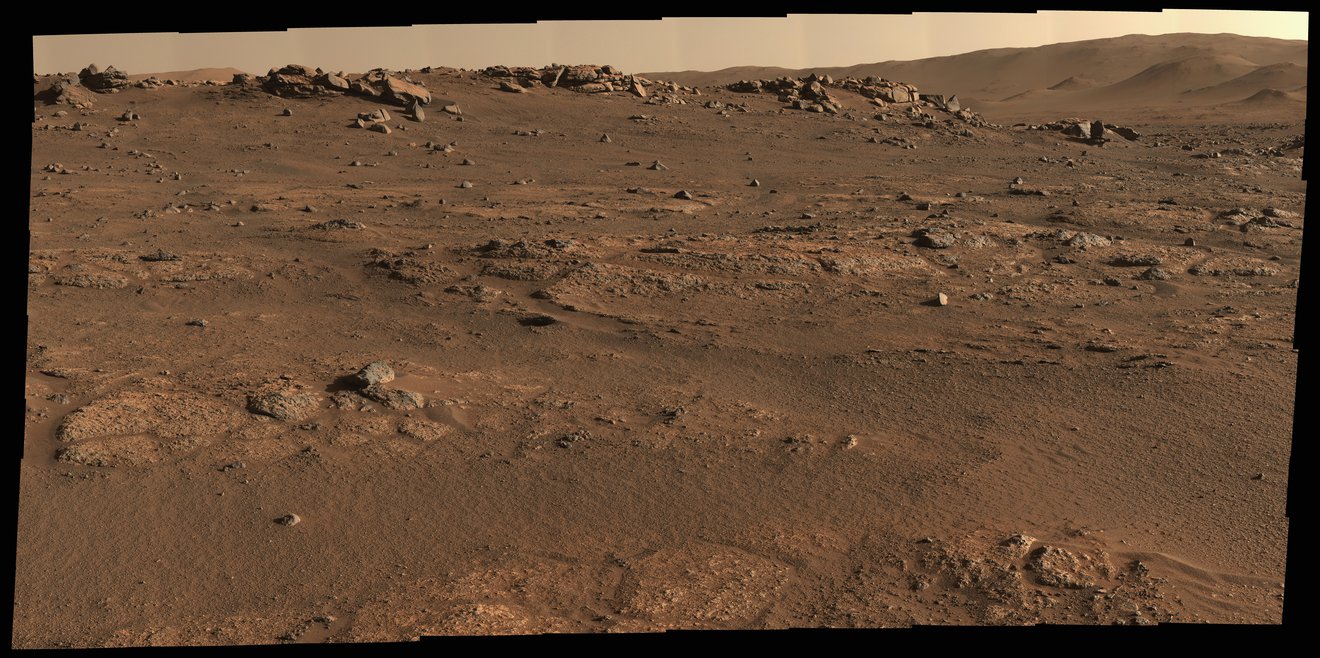
When we are little, we learn a simplified view of just about everything that both comforts us with the idea that we actually understand the world and sweeps away all the controversies that are alive and well among researchers who don’t all agree on what different data and research actually mean.
The story of how humans originally came to the Americas, for instance, is taught as an elegant picture where, during the last glacial age, a land bridge stretched from modern-day Siberia to modern-day Alaska, and 15,000-25,000 years ago humans crossed the Bering Sea and over thousands of years, migrated south and west to fill the continents with vibrant societies that were all but destroyed when smallpox came to the Americas with Europeans in the last half millennia. Sometimes books will mention that random boats may have made the trip from Polynesian islands or even from Western Africa to South America.
What is generally omitted is the highly controversial evidence of human settlement in the American Southwest as early as 30,000 years ago, before the glacial period. None of the sites so far found has been a slam dunk that scholars could look at and say, “Yes, that is from humans, and yes, that is really that old.” Confusion arises in both methods for age-dating and in knowing that rocks that appear shaped into blades were actually shaped by humans and not nature.
Scientists trying to understand how life can arise on a world and how intelligent life can move on to fill a world’s ecosystems look to the Americas and their position so far from South Africa’s cradle of humanity as the final ecosystem humans would have entered. Understanding human migration gives us insight into the rise of life on planets and lets us imagine the rise of life on other planets.
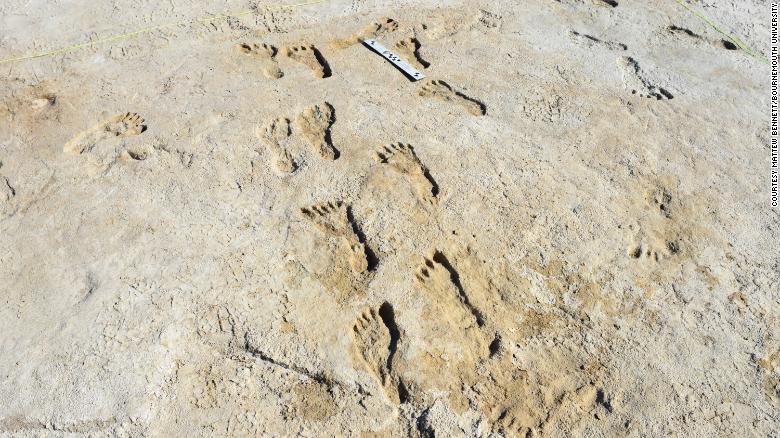
White Sands, New Mexico, is a place where science, technology, and deep history all come together. This sprawling landscape of shockingly white sand is in one area a national park and in another area a missile range. This area is home to the first adaptive optics telescopes, and sites at the foot of Apache Point are the home of the National Solar Observatory and the Sloan Digital Sky Survey. It is also home to ancient footsteps from humans and mammals now extinct that are fossilized in a dry lake bed.
Dating these footprints has been a challenge because sand doesn’t exactly contain the stuff needed to carbon date or otherwise radio-date samples. To give an age to these myriad footprints of different individuals, it was necessary to find imprints that passed between layers containing vegetation – vegetation that can be carbon dated.
In a new paper in the journal Science and led by Michael Bennett, researchers describe a set of tracks, above and below layers of sediment containing seeds, which they were able to radiocarbon date to between 21,000 and 23,000 years ago. There are only two ways to explain these footprints that we know: either they actually are that old and push back the arrival of people in the American Southwest, or the seeds used for radiocarbon dating contained carbon that was absorbed from rocks dating back to 21,000 – 23,000 years ago, and it really looks like it could be that the footprints were just that old. If this is true, it indicates that life will find a way, even if it means finding a way through massive ice sheets or across great oceans to find new places to settle.
I am hoping that this research will trigger a meeting of researchers who will come together to once again look at sites like Mesa Verde, Gault, and Clovis, and to work – as these researchers worked – with the elders of the tribes that have lived on these lands since those original settlers arrived. From story and archeology, we may get at the truth of humanity’s sprawl across planet Earth.
Over a decade ago, all the work being done on exoplanets was categorized under astrophysics. It was a lot of theoretical work, as Kepler had barely launched, and we didn’t have this wild stable of thousands of known exoplanets to work with. But now, because we can observe worlds in other systems, exoplanets are bridging the divide between astrophysics and planetary science. So not all planetary science involves our solar system anymore. Every day, we physically observe more and more about exoplanets.
And now, in new research presented at the Europlanet Science Conference (EPSC), we have managed to detect clouds on an exoplanet.
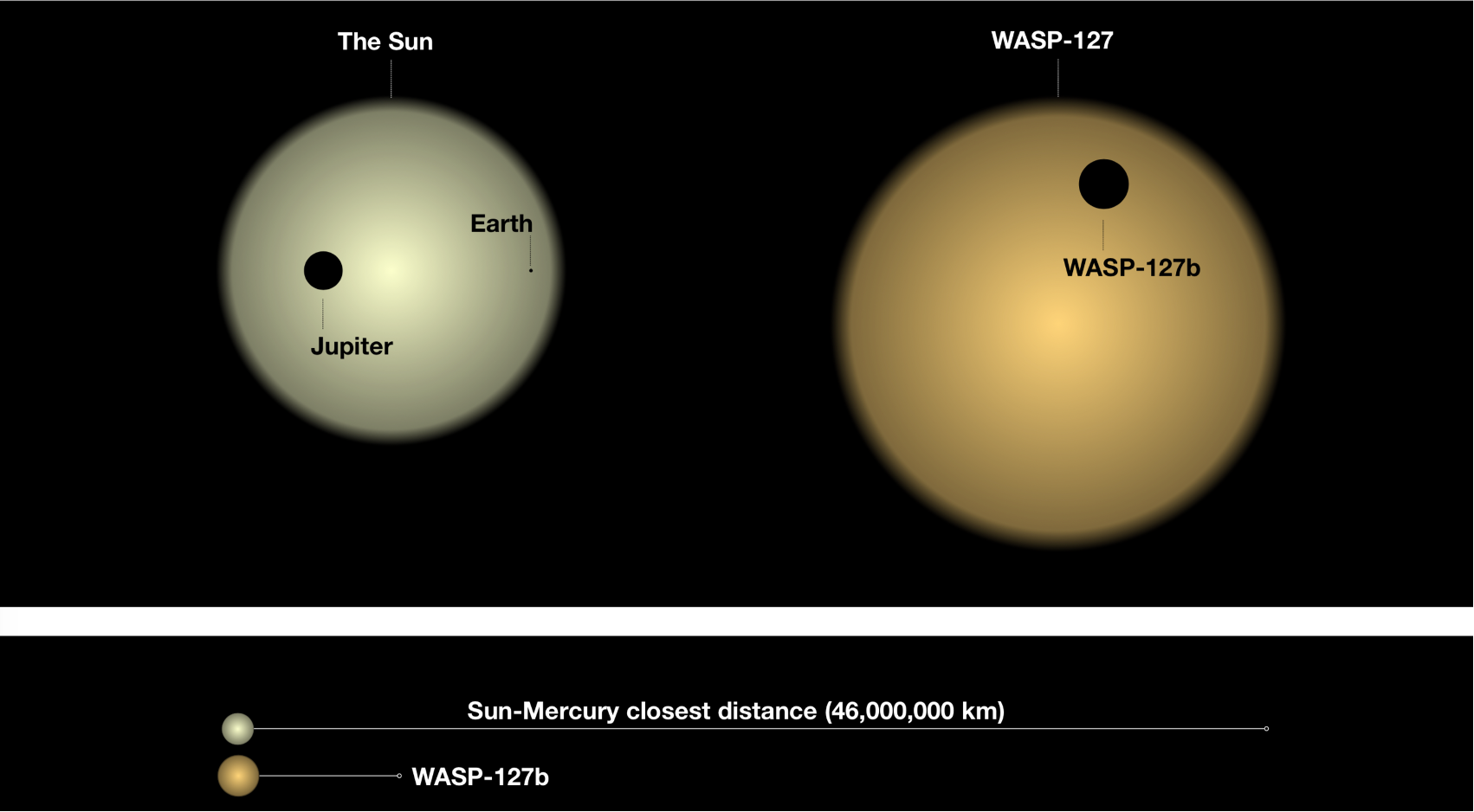
The planet in question is WASP-127b, which is about 525 light-years away. It’s a hot Saturn, rather than a hot Jupiter for once because it’s similar in mass to Saturn and orbits very close to its parent star. It orbits that star once every four days, and it can be up to 1,100 degrees Celsius at the surface. Like Saturn, it’s also very fluffy, with a radius 1.3 times that of Jupiter but a fifth of the mass.
The exoplanet was found using the transit method, which means we measured the change in the light from the star as the planet passed between it and us from our point of view, and that dip in the light was evidence of WASP-127b.
As our instrumentation has improved, our ability to understand the composition of a gassy exoplanet has also improved, to the point where we can detect the presence of compounds like water vapor. And that fluffiness we mentioned earlier actually makes the planet easier to observe because we can see farther into the atmosphere due to the low density. So a team of astronomers used infrared observations from the Hubble Telescope and visible light measurement from the ESPRESSO spectrograph, which is on the Very Large Telescope in Chile, to analyze different regions of the planet’s atmosphere.
Presenter and study lead Dr. Romain Allart explains the results: First, as found before in this type of planet, we detected the presence of sodium, but at a much lower altitude than we were expecting. Second, there were strong water vapor signals in the infrared but none at all at visible wavelengths. This implies that water vapor at lower levels is being screened by clouds that are opaque at visible wavelengths but transparent in the infrared.
Not only did they find clouds, but they also managed to narrow their altitude down to an atmosphere layer existing where the atmospheric pressure ranges from 0.3 to 0.5 millibars. We found clouds, everyone, and we know about where they should be. On an exoplanet. What even is this magic?
Of course, we still have questions, as Allart points out, noting: We don’t yet know the composition of the clouds, except that they are not composed of water droplets like on Earth. We are also puzzled about why the sodium is found in an unexpected place on this planet.
On top of these results, data from the ESPRESSO instrument suggests that WASP-127b orbits outside the equatorial plane and rotates in the opposite direction from the host star. Allart goes on to say: Such alignment is unexpected for a hot Saturn in an old stellar system and might be caused by an unknown companion. All these unique characteristics make WASP-127b a planet that will be very intensely studied in the future.
And we will bring you any news on this fascinating world as it is published, here on Daily Space.
Review
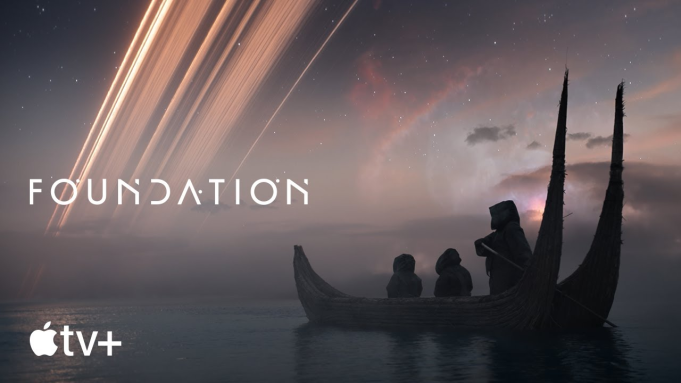
During this week’s review segment, we want to take a look at Issac Asimov’s novel Foundation and the new Apple TV series based on this 1951 novel.
I first read this series more than a decade ago, and to a certain degree, had to force my way through it. The book is a series of vignettes that look at the fall of a great galactic empire and how society collapses and then rises again in ways that can be statistically understood through a field called psychohistory. The book is almost devoid of women, except in roles as essentially pets or scenery, and it is difficult to connect with the dryly written academics who are trying to maintain the knowledge of humanity until the empire can rise again. These are books you read for the ideas that are introduced and not for the character development. The ideas are often amazing and are a master class in social engineering. The character development, well, there is none.
With its new television series, AppleTV is using the books as a scaffolding to tell a story that, by the end of its first episode, is already is rich in cultures, characters I want to see more of, and hints of how they are going to tell a multigenerational story through television without taking the literal jumps that shows like The Crown employ.
The visual effects in this series are lush. It brings to mind Metropolis and Blade Runner but updated to the limits of what is possible with television budget CGI. The costuming tells its own stories, and after a single episode, I want more of this world so that I can see both what the visual artists come up with next, and – more importantly – where the stories of these characters go next.
I know from the books who are the heroes and villains, and I can already see that this is written so that even the villains are clearly acting in what they feel are in the best interests of the universe, and this promises to be a nuance-rich series that makes us question what it means to act in the best interests of humanity, now and in the future.
When Asimov wrote the original novel in the middle of the last century, computers were just starting to exist, atomic energy seemed to be the ultimate answer to technology, and pocket calculators were a luxury. In imagining the future, Asimov didn’t think big enough, and the book now feels out of date as folks continue to use pocket calculators rather than pocket computers or something even more advanced. In creating the show, the writers – and IMDB didn’t let me sort who might be leading the writing room – those myriad writers give everything an update. They add details to Asimov’s vignettes that include new technology, with calculators being replaced with holographic machines and shuttles to a planet’s surface being replaced with a space elevator. These upgrades make this future still feel like a future.
After just the first episode, I can already see that some critics may complain that the production team was too “woke” in casting this show. The actors are drawn from around the globe and bring myriad colors and accents to the screen, and only in dealing with the emperor’s family and staff do we see scenes with only white cast members. This amount of diversity is sadly not the norm and thus stands out. It feels normal though, and as someone who grew up in the diverse city of Boston, it feels right to see so many different kinds of people coming together in one of the biggest city-planets in this fictional universe. To those critics who call this diversity for the sake of diversity, I encourage you to ride public transportation in the major city of your choice. This is reality finally reflected on the screen.
Season one promises ten episodes, and I plan to be there for all ten. You can stream Foundation only on Apple TV+. We are not sponsored by Apple, and the account used to create this review was paid for by us, bias-free.
This has been the Daily Space.
You can find more information on all our stories, including images, at DailySpace.org. As always, we’re here thanks to the donations of people like you. If you like our content, please consider joining our Patreon at Patreon.com/CosmoQuestX.
Credits
Written by Pamela Gay and Beth Johnson
Hosted by Pamela Gay
Audio and Video Editing by Ally Pelphrey
Content Editing by Beth Johnson
Intro and Outro music by Kevin MacLeod, https://incompetech.com/music/


 We record most shows live, on Twitch. Follow us today to get alerts when we go live.
We record most shows live, on Twitch. Follow us today to get alerts when we go live.